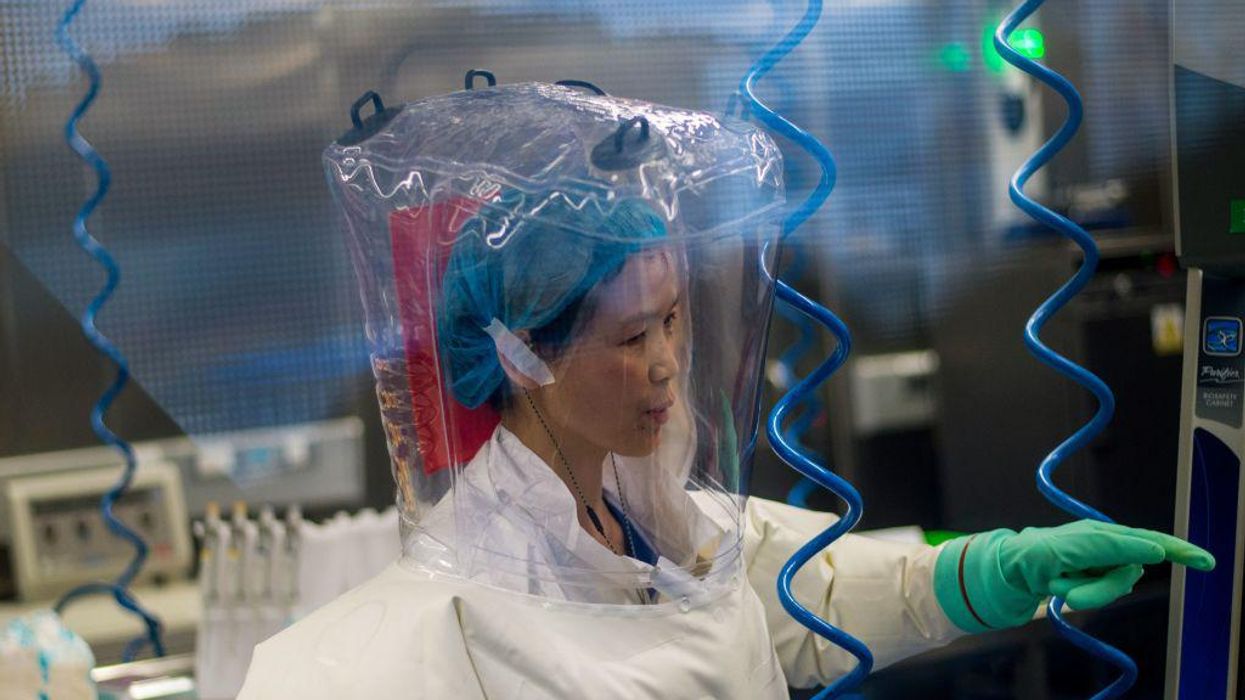
JOHANNES EISELE/AFP via Getty Images

A top Chinese researcher at the Wuhan Institute of Virology was consulted on and offered edits to an influential 2020 commentary that claimed there was "no credible evidence" supporting the lab-leak origin theory of COVID-19, a newly released document reveals.
The researcher, Shi Zhengli, is a prominent virologist at the Wuhan lab, which is facing international scrutiny over concerns that risky coronavirus research performed there may be linked to the origins of the COVID-19 pandemic. The commentary, published by Emerging Microbes & Infections in February 2020, was titled, "No credible evidence supporting claims of the laboratory engineering of SARS-CoV-2." The paper was written by Shan-Lu Liu, Linda J. Saif, Susan R. Weiss, and Lishan Su.
A document made public by U.S. Right to Know shows that Shi proposed three noteworthy edits to a draft of the commentary but was never credited by the authors, nor was the potential conflict of interest of having a Wuhan lab scientist contribute to a paper denying the Wuhan lab-leak theory disclosed.
U.S. Right to Know summarizes Shi's edits as follows:
Shi proposed three edits of note. First, she proposed changing the presentation of the number of nucleotides that differed between RaTG13, which was the closest relative of SARS-CoV-2 identified at that time, and SARS-CoV-2. The authors wrote this difference was "greater than 1000 nucleotides." Shi proposed deleting "1000" and replacing it with "1100" nucleotides. This edit appears to maximize the presentation of the difference between the two viruses.
Second, Shi proposed deleting a paragraph discussing the mouse-adapted SARS-CoV virus, MA15 (that had been used in Ralph Baric's lab in collaboration with Shi), and how its serial passage had increased viral replication and lung pathology in mice. This appears to be an effort at distancing from the gain-of-function debate surrounding the research done together by Shi, Baric and the EcoHealth Alliance.
Third, Shi edited a statement on bats as natural reservoirs, and civets as intermediate hosts, of SARS-CoV.
Shi's second edit, in which she appears to hide the connection of her work to gain-of-function research — experiments that intentionally make viruses more transmissible among mammals, and particularly among humans — is especially concerning given the controversy surrounding EcoHealth Alliance's funding for gain-of-function research at the Wuhan Institute of Virology and the early observations of scientists who studied the SARS-CoV-2 virus and thought "some of the features (potentially) look engineered."
Among the scientists who raised this possibility were at least two of the authors of the EMI paper. Emails previously released by U.S. Right to Know show the authors privately expressed doubt to each other about its conclusions. Susan Weiss, for instance, wrote to Shan-Lu Liu in a Feb. 16 email expressing her "doubt" that the virus was engineered in a lab but nevertheless noted the SARS-CoV-2 virus has a distinctive furin cleavage site that is atypical of related bat coronaviruses.
It should be noted that Liu is the editor-in-chief of EMI and oversaw the publication of the paper. Five days later, Liu wrote back to Weiss, "Susan, I completely agree with you, but rumor says that furin site may be engineered. Importantly, the virus RNA sequence around the furin site (288 nt), before and after, has 6.6 % differences, but with no amino acid changes at all."
Weiss in turn responded, "Henry and I have been speculating- how can that site have appeared at S1/S2 border- I hate to think to [sic] was engineered- among the MHV strains, the cleavage site does not increaser pathogenicity while it does effect entry route (surface vs endosome) . so for me the only significance of this furin site is as a marker for where the virus came from- frightening to think it may have been engineered[.]"
These concerns were not discussed in the paper.
Importantly, Shi was not the only gain-of-function researcher who consulted on the draft. Dr. Ralph Baric, the leading coronavirus researcher in the United States, was asked to provide comments and revisions, which emails show he agreed to do on the condition that he would not be cited "as having commented prior to submission."
Baric and Shi had previously collaborated on a 2015 gain-of-function study that received federal funding from the National Institutes of Health and was somehow exempted from an Obama administration moratorium on funding for such research.
Neither Shi's nor Baric's contributions to the EMI paper draft were acknowledged once the commentary was published.